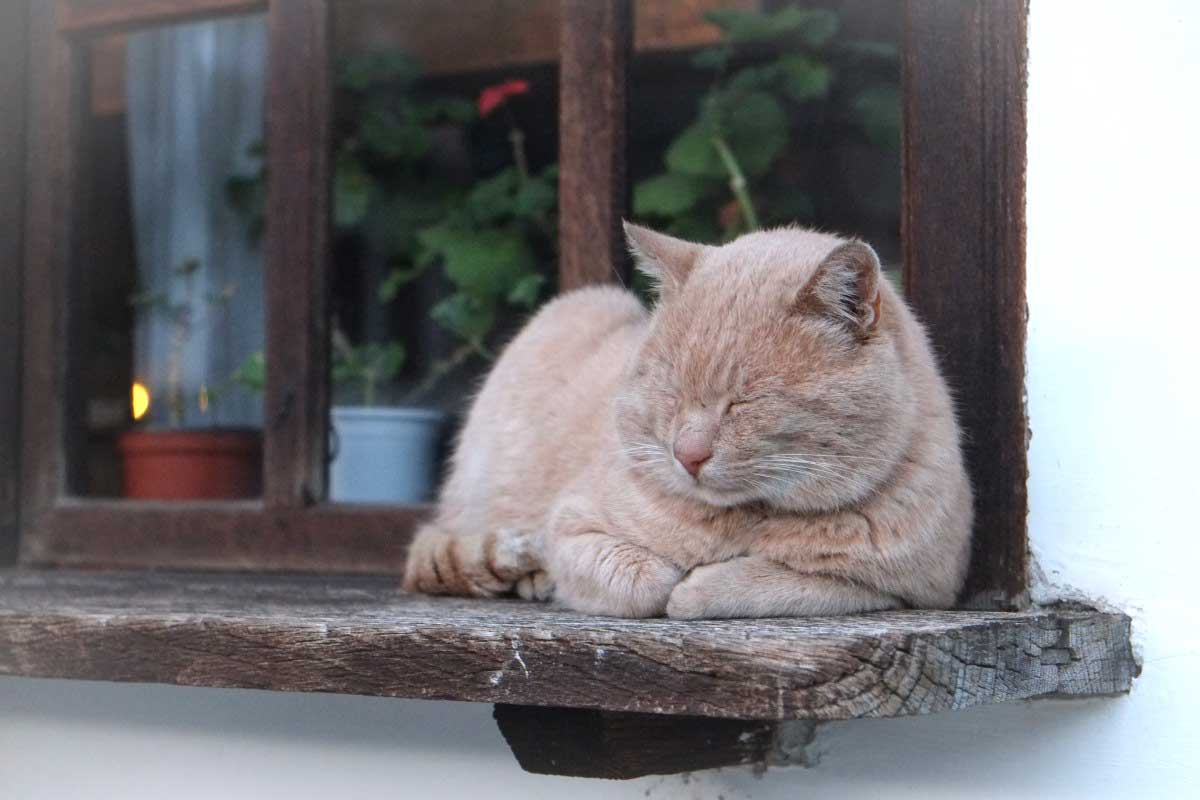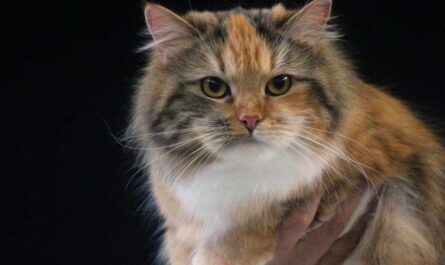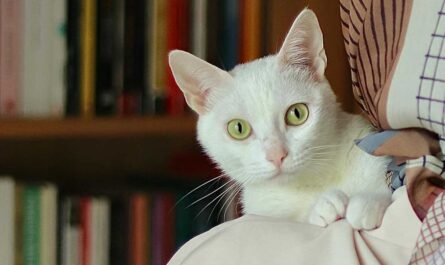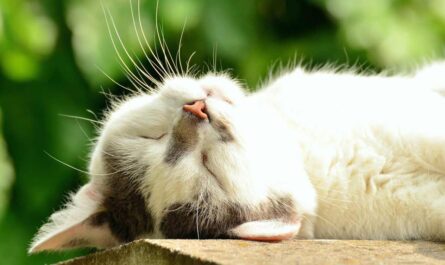What are some of the common reasons why do cats sleep so much? Delving into the feline realm, we encounter a fundamental truth: cats, both domestic and wild, possess an innate inclination for prolonged periods of slumber. This propensity can be traced back to their evolutionary roots. Wild cats, driven by the need to preserve their energy for the rigors of hunting, adopted a sleep-heavy lifestyle. While our domesticated companions may not engage in hunting, this instinct endures.
The world of cat sleep is a realm where signals are often subtle but laden with significance. Whether it’s the indication of an underlying health issue, the natural transformation of age, the response to seasonal dynamics, or the expression of stress coping mechanisms, understanding your cat’s sleep patterns is a key component of responsible pet ownership. Cat accessories on Amazon. By recognizing the multifaceted nature of feline slumber, you can ensure that your beloved feline friend enjoys a life of comfort and contentment, even as they navigate the complex world of sleep.
In unraveling the enigma of feline slumber, we unearth a complex interplay of instincts, adaptations, and individual idiosyncrasies. Understanding sleeping factors allows us to appreciate the mesmerizing world of catnaps, where each feline crafts its unique tapestry of rest and wakefulness.
Quantifying a Cat’s Need for Slumber
The world of cats is a realm of intrigue and wonder, filled with behaviors honed over millennia of evolution. Their crepuscular nature, energy conservation prowess, and susceptibility to boredom are facets that define their existence. Bird accessories on Amazon. Understanding these aspects is not just an academic exercise but a path to enriching the lives of our feline companions. By embracing their nocturnal instincts and providing them with a stimulating indoor environment, we can ensure that our cats lead lives filled with vitality and contentment, whether they prowl the twilight hours or curl up in peaceful slumber.
Typically, cats allocate a substantial chunk of their day, approximately 15 to 20 hours, to rest and slumber. However, as they progress through various life stages, their sleep requirements undergo alterations:
- Kittens, in their formative days, tend to embrace slumber as their primary pursuit, interspersed with brief bursts of vitality, usually prompted by mealtime.
- Adolescent cats, marked by a blend of erratic sleep patterns and energetic playfulness, navigate a transitional phase.
- Adult cats, settling into more regimented sleep schedules, tend to accumulate a daily dose of 12 to 20 hours of sleep.
- Senior cats, as age takes its toll, tend to embrace extended periods of repose, marked by diminished mobility and energy levels.
As your feline companion matures into adulthood, you’ll likely discern the emergence of a discernible sleep-wake rhythm. During these slumbers, cats frequently engage in what’s known as slow-wave sleep (SWS), constituting roughly 75% of their sleep duration. This phase is characterized by a state of rest that maintains alertness. Watchful eyes and twitching ears often accompany these light naps.
Individualistic Cat Slumbers
An essential facet to comprehend is that every cat harbors its unique slumber pattern, rendering the notion of a universal norm somewhat elusive. Cat accessories on Amazon. Your feline’s preferred sleeping regimen may markedly differ from that of another.
As a general guideline, you can anticipate your cherished feline to dedicate approximately 15 to 20 hours of their existence to the realm of dreams.

Unpacking the Cat’s Sleep Enigma
Cats, those enigmatic and captivating creatures, possess a behavioral tapestry that is as intricate as it is intriguing. From their crepuscular tendencies to their astute energy management, these feline friends hold many secrets. In this comprehensive exploration, we delve into the captivating world of cats’ nocturnal nature, shedding light on the reasons behind their behaviors and how we can enrich their lives in an indoor setting. The question lingers: Why do cats devote such a substantial portion of their lives to slumber? Several factors come into play to elucidate this intriguing phenomenon:
Nocturnal Nature
Cats, often characterized as crepuscular creatures, come alive during the dawn and dusk hours. This behavior is not a happenstance but a deeply ingrained trait that harks back to their ancestral role as predators. In these twilight periods, when the world is bathed in the soft, diffuse light, cats find their prime hunting time. Cat accessories on Amazon. Their senses are finely tuned to spot even the subtlest movements of potential prey. This crepuscular behavior is a testament to the cunning and efficiency of these natural hunters, who leverage the cover of semi-darkness to stalk and pounce with unparalleled precision.
Energy Conservation
The pursuit of prey is an ardent endeavor, demanding swift bursts of energy and remarkable agility. Cats have evolved to master the art of energy conservation as a counterbalance to these exhausting bouts of hunting. They are meticulous about preserving their energy reserves, knowing that the success of their hunts depends on it. This leads to a fascinating behavioral quirk – cats can sleep for prolonged periods, recharging their bodies like well-oiled machines, ready to spring into action when the time is right. The strategic allocation of rest and activity is a testament to their evolutionary adaptability.
Boredom
While outdoor cats can partake in the natural rhythm of the crepuscular hunt, indoor-dwelling cats face unique challenges. Boredom, often afflicting these felines, can lead to extended slumber periods. An idle cat might resort to overeating, excessive vocalization, or even engaging in mischief to stave off tedium. Dog accessories on Amazon. Recognizing and addressing this issue is crucial to ensuring the well-being of indoor cats. Enriching your feline’s environment with exploration opportunities, hiding spots, perches, and engaging toys can provide the mental and physical stimulation they crave. By transforming their indoor surroundings into a dynamic and fulfilling landscape, you can help your cat lead a contented life, even without the allure of outdoor adventures.
Ailing Health
Cats, being creatures of habit, tend to signal their discomfort through changes in behavior, particularly when they are unwell. If your cat suddenly retreats to secluded locations or adopts an unusual sleeping pattern, it may well be a subtle indicator of underlying discomfort or illness. Viral or bacterial infections can take a toll on your feline friend’s vitality, causing them to withdraw from their usual activities, including their daily bouts of playfulness.
Age-Related Shifts
Aging gracefully is a hallmark of feline life. As cats enter their golden years, they undergo a remarkable transformation in demeanor. You may notice reduced playfulness but heightened cuddliness, with senior cats often displaying a greater affinity for extended naps. This change in behavior is a natural part of the aging process, as older cats prioritize rest and comfort over the energetic antics of their youth.
Seasonal Dynamics
The arrival of winter heralds more than just chilly temperatures; it can also lead to a shift in your cat’s sleep patterns. Diminished daylight hours and altered routines can prompt cats, particularly those who roam outdoors, to increase their sleep duration. Cat accessories on Amazon. This phenomenon is especially discernible among outdoor cats, who are constrained by harsh weather conditions and dwindling hunting opportunities. It’s their way of conserving energy during the colder months.
Stress Coping
Cats are adept at coping with stress and fear through various mechanisms, one of which is altering their activity levels and sleep patterns. In times of distress, they may resort to concealment and extended periods of sleep. Conversely, heightened restlessness can also be a sign of unease. Any deviations from your cat’s customary sleep behavior, whether it’s excessive slumber or restlessness, may serve as subtle indicators of stress or anxiety. It’s crucial to pay attention to these signals and provide a supportive and comforting environment for your feline friend during challenging times.
Deciphering the Cat’s Slumber: Rest vs. Sleep
Within the realm of feline slumber, a nuanced distinction unfolds between restful pauses and genuine sleep. It’s akin to a cat’s gentle reprieve—moments when their eyes shutter, and they tune in to the world around them. During these intervals, your feline companion may partially or fully close their eyes, yet their ears or tail retain a subtle hint of movement.
Cats indeed experience profound slumber, reminiscent of human rest, albeit in concise cycles lasting a mere 15-20 minutes. Pet accessories on Amazon. Their episodes of profound repose are comparatively brief, often hovering around five minutes. The feline sleep landscape is demarcated by a recurring sequence of four phases:
Cat Naps: Often coined as “loafing,” these naps find cats curled up with their paws tucked beneath their bodies, ever-ready for a sudden pounce.
Zoomies: Following a day peppered with catnaps, your spirited feline emerges primed for a late-night pursuit. Dawn and dusk, harboring the echoes of their ancestral hunting instincts, serve as the cat’s prime hours of activity.
Deep Sleep: In similarity to humans, cats delve into the realms of profound slumber. This phase typically unfurls after their night-time foray, resulting in a sprawled-out feline less inclined to awaken abruptly.
Morning Zoomies: Transitioning from their dawn escapades to the earnest plea for breakfast, cats greet the day with remarkable vigor. Once their “hunt” concludes, the cycle recommences, characterized by daytime catnaps before the next adventure.
Indicators of Excessive Feline Slumber
Discerning the fine line between a cat’s customary slumber patterns and deviations therein is key. Rather than relying on a fixed quantum of sleep, it’s about understanding your cat’s innate rhythms and flagging noteworthy alterations. Prolonged periods of slumber, peculiar sleeping locales, or diminished interactivity warrant scrutiny. Lethargy, if accompanied by other telltale signs, such as:
- Inappropriate Urination
- Aggression
- Reduced Activity
- Unexplained Weight Fluctuations
- Alterations in Eating Patterns
- Halitosis (Bad Breath)
- Modifications in Vocalizations
All these factors constitute potential red flags deserving of your attention. Feline vitality thrives on both physical and cognitive stimulation. Fish and Fishing accessories. Hence, fostering opportunities for play and activity holds the key to their happiness and well-being. In cases where your cat displays a waning interest or energy for engagement, consulting a veterinarian becomes prudent.
The Invaluable Takeaway
Ensuring your pet receives an optimal quota of sleep is as paramount as it is for humans. The sleep tapestry of a cat, however, is woven from a distinct fabric, influenced by genetic heritage and survival instincts. Cat accessories on Amazon. The quantum of daily sleep your cat necessitates may oscillate with the seasons, their age, and daily routines. Thus, vigilant observation of your feline’s customary catnap schedule is essential. In the event of abrupt alterations in their sleep patterns, endeavors to enrich their lives or veterinary consultation should top your agenda.
More Interesting Articles
- 23 Essential Health and Care Tips for New Cat Owners
- 14 Tips How To Introduce & Habituate a Kitten to a Cat
- 15 Top Reasons to Adopt an Older Cat Is a Good Option
- Should I Get A Cat or a Kitten? 15 Tips to Take Decision
- 19 Ways Cats Show Their Love & Affection to You
- How to Bathe Your Cat: With or Without Water, Not Do-Do
- Reasons Why Does My Cat Poop on My Bed? 16 Solutions
- Why is My Cat Pooping Outside the Litter Box: 12 Reasons
- 14 Cat or Kitten Behavior: How to Understand & Handle
- 8 Reasons to Decide Which is Better for You: Cats or Dogs?
- 34 Interesting Facts People Love to Learn about A Cat
- How to Get My Cat to Successfully Use the Litter Box
- A Complete Guide: How to Find the Perfect Cat for You
- How to Cut, Clip, or Trim Cat Nails: A Beginner’s Guide
- 30 Tips to Find the Best Way to Raise A Kitten Smoothly
- Egyptian Mau Cat Breed Profile, Care, Description, Behavior
- 10 Best Food for Older Cats with Sensitive Stomachs
- 10 Best Litter Boxes for Cats That Pees Over the Side
- 5 Best Cat Food Items for Sensitive Stomach Vomiting
- Best 5 Cat Food For Sensitive Stomach and Urinary Health



